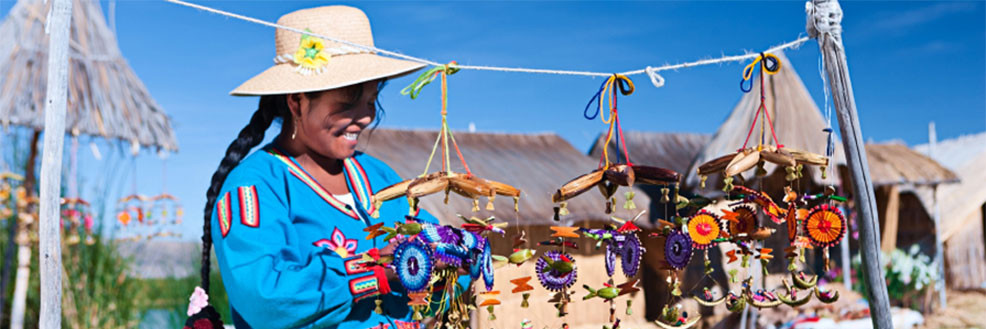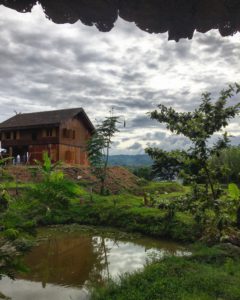This post was written by Shonali Banerjee, Doctoral Researcher in International Development, University of Sussex.
As global humanitarian crises get broader, more complicated and more urgent, it’s critical to evaluate the current aid models and how they might be improved. Professor Thea Hilhorst of Erasmus University in the Netherlands discussed this topic earlier in the summer during a fascinating lecture at the Institute of Development Studies (IDS). A long-time scholar of humanitarian and reconstruction issues, Professor Hilhorst examined the many pitfalls of the classical humanitarian aid paradigms and explored the direction future humanitarian aid models can (and likely should) take. Here I’ll discuss the lecture and it’s many key takeaways, and relate Professor Hilhorst’s points to my own previous work with refugees on the Thailand/Myanmar Border.
The lecture emphasized the classical humanitarian aid paradigm and how deeply grounded it is in exceptionalism. As Professor Hilhorst explained, humanitarian aid was designed solely to ameliorate an emergency; it’s a temporary stop gap, never a permanent solution. The nature of these short-term funding cycles is due to the fact that humanitarian assistance is viewed in the legal frameworks as being both urgent and temporary. As such, funding from these organizations will almost never be provided on a long-term, multi-year basis, which inherently adds to the continuing precariousness of situations in conflict-ridden areas. This ingrained separation between crisis and normality forms the foundational framework of the traditional humanitarian aid model– the idea that crisis (be it man-made or natural) is only temporary.
Unfortunately, reality has shown that humanitarian issues stemming from a range of causes are very rarely resolved in a quick and timely fashion. The US Federal Emergency Management Agency (FEMA) halted the majority of it’s operations in Puerto Rico mere months after Hurricane Maria decimated the island in September 2017, and yet thousands of citizens still don’t have electricity nearly one year later. Similar could be said regarding the immensely complex situation in Syria, which has seen millions of refugees and displaced people pour into neighboring countries like Lebanon, Turkey, and Greece. Given the short-term and constantly refreshing nature of many humanitarian aid programs, providing long-term solutions for resettlement and resource concerns in these areas is an extraordinarily difficult task.
Returning to the idea of emergency vs. the status quo, Professor Hilhorst made the important point that in current times it seems that crisis is the new normal. So how should humanitarian aid be properly distributed in order to reach the most people effectively? One significant model that has been in circulation in recent years is “the local” option. In 2016, just 0.2% of humanitarian funding globally was channeled through local actors. The idea of localizing aid, and maintaining a more grounded approach to distribution could produce a higher rate of aid being effectively used. However, complications arise in this model as well. Persistent notions of victimhood come to the forefront here, with one entity playing the role of benevolent benefactor and the other a disenfranchised victim. As Hilhort mentions, both sides end up playing a game, with aid recipients often realizing that the only real way to ensure they get the aid funding is to victimize themselves, rather than work on rebuilding and local empowerment.
This most recent point brought to mind my years of work in northern Thailand, where I spent time working with various organizations supporting refugees from Myanmar. Although many regions of Myanmar along the Thai border still experience bursts of violence, local militia upheaval, and civil unrest, the overall consensus has been that the regions have relatively stabilized in recent years with the fall of the Burmese military junta. Despite the current relative peace, refugee and internally displaced persons (IDP) communities are reluctant to return to their homelands. For many, Thailand has been their home now for generations; the refugee camps have oftentimes become fully functioning communities. Children born in refugee camps are technically Thai and therefore allowed to attended regional Thai schools, a much better educational opportunity than in Myanmar.
This creates a difficult situation for the refugees, the humanitarian aid organizations, and the Thai government. Thailand has long had contentious relationships with ethnic minority groups from Myanmar, and often local Thai governments have no desire to expend their resources supporting migrant or refugee populations. And since resettlement efforts have halted in many areas, refugee camps have gone from becoming a short-term “crisis” option to permanent settlements. Several large refugee camps have consistently received aid from the humanitarian aid framework, but many smaller camps and settlements have been overlooked due to ethnic issues and scale constraints. Although there is little question that aid should be more localized, one concern is how to prevent local biases and regional conflicts from affecting how the aid is distributed.



Leave a Reply